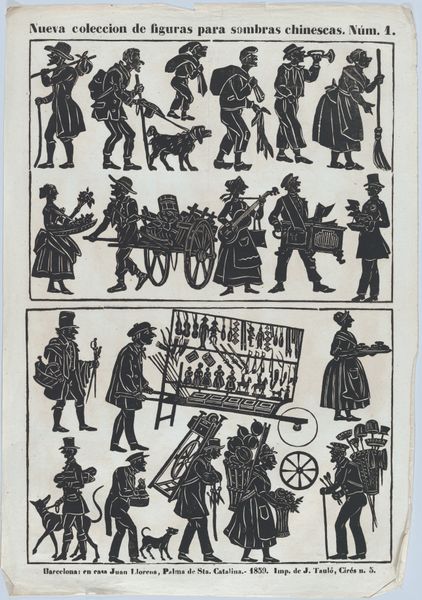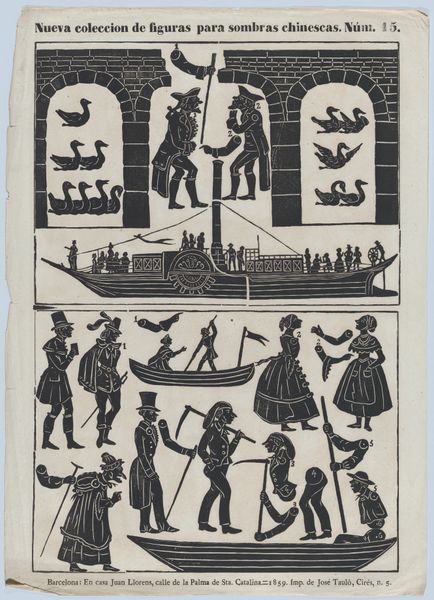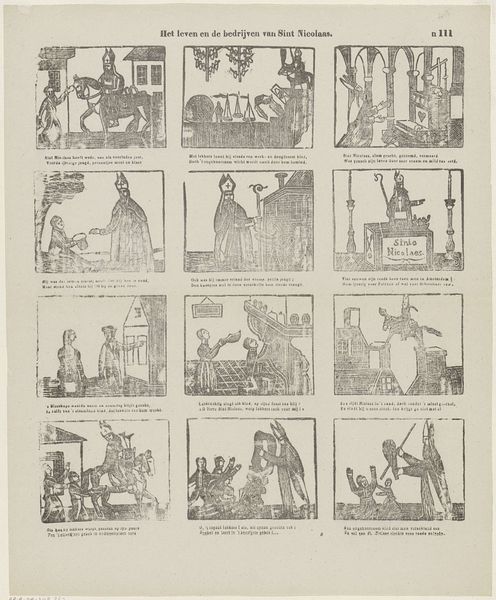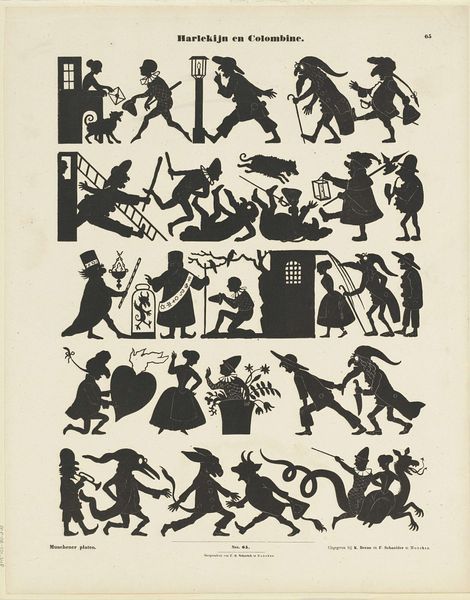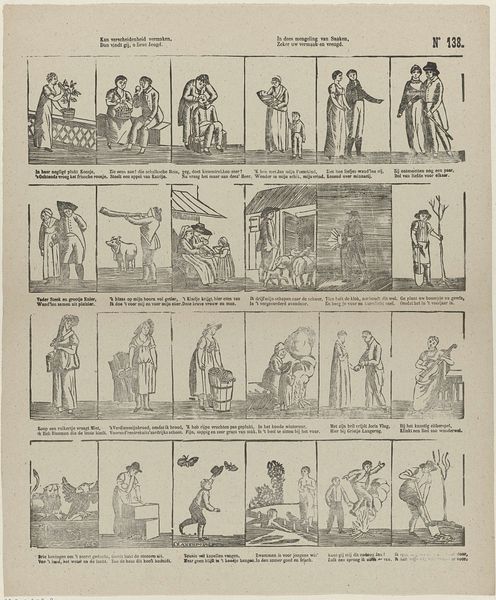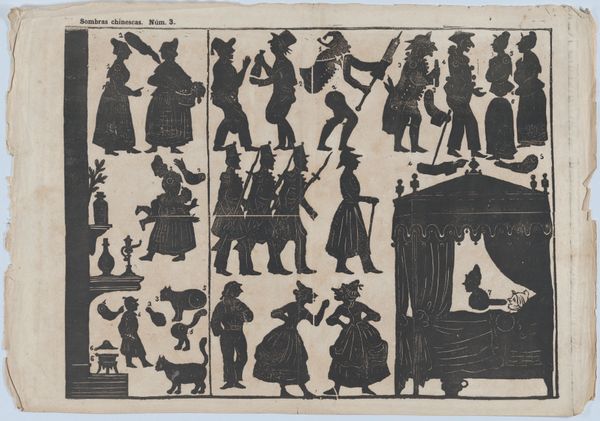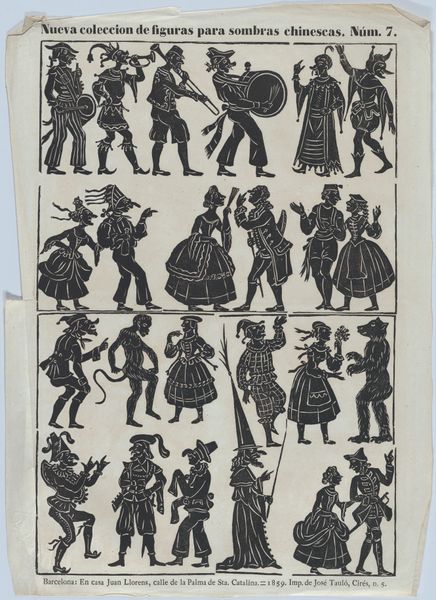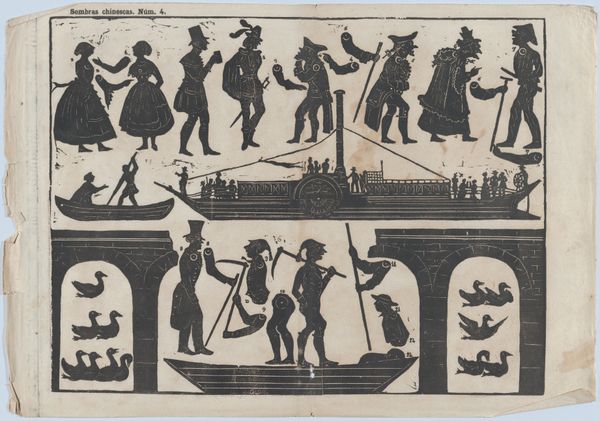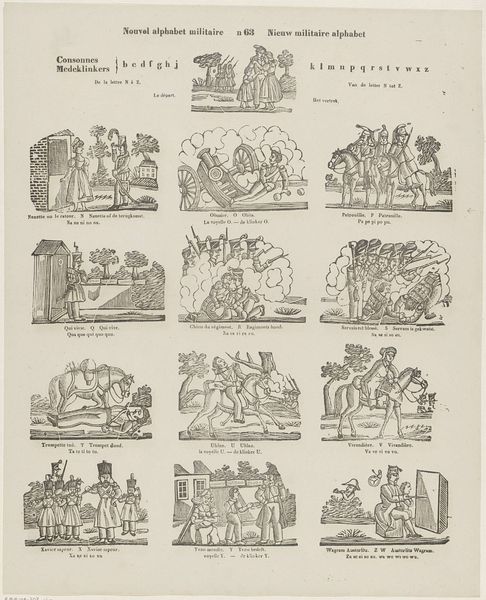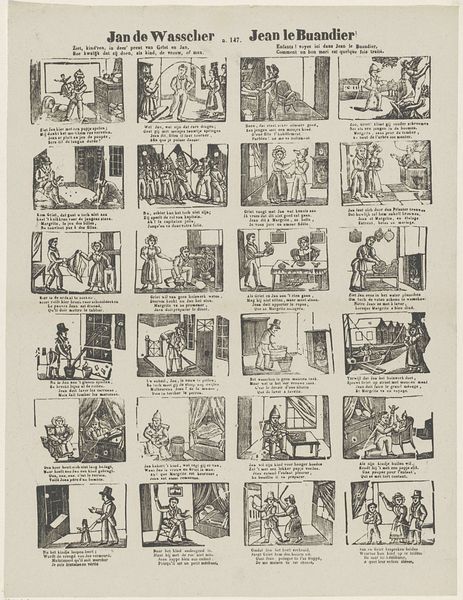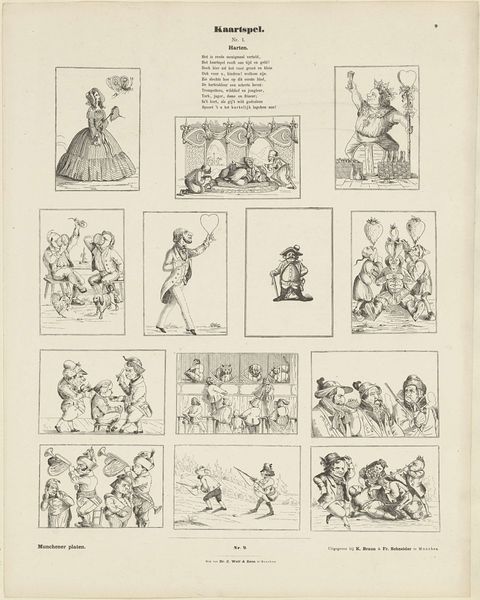
drawing, print
#
drawing
#
narrative-art
#
animal
# print
#
ukiyo-e
#
figuration
#
personal sketchbook
#
orientalism
Dimensions: Sheet: 17 11/16 × 12 5/8 in. (45 × 32 cm)
Copyright: Public Domain
Curator: What a fascinating find this is! Here we have “Sheet 11 of figures for Chinese shadow puppets” created in 1859. Currently residing at the Metropolitan Museum of Art, this work appears to be a print, possibly a woodblock, offering a range of characters and scenes ready to be cut out and brought to life. Editor: Intriguing! The high-contrast silhouettes immediately evoke a sense of theatrical drama, almost like a darkly whimsical storybook come to life. There’s a clear emphasis on strong outlines and simplified forms. Curator: Precisely. Focusing on the production itself, it’s fascinating to consider the artisan's process. A print like this would have involved a dedicated print shop and specialized labor, moving it out of the domain of individual artists creating unique works. I’d love to examine the paper stock to gauge its production costs and dissemination channels. Editor: Right, thinking about dissemination, it's vital to contextualize this as potentially part of the vogue for so-called "chinoiserie" that fetishized certain aesthetic stereotypes—what politics underpinned such an imagining of Chinese culture and labor for a Western audience? Consider the devilish figures: were they created from colonialist perceptions? Curator: Indeed. It’s difficult to definitively determine what the function and place in society for these kinds of prints really were from a distance. Considering its possible function as material to be crafted into children's entertainment. This makes me wonder, did such a cheap process open possibilities for creating folk retellings that stood in opposition to “higher” modes of theatrical craft? Editor: Absolutely! Also, notice the clear separation of social types, gender, and morality tales through symbolism embedded in this imagery. One must wonder who gets to represent and consume these narratives? Curator: It reminds me that we need to keep examining the production, circulation, and then use of visual imagery during the 19th century. These shadow puppets are just the starting place to unpack these issues! Editor: Agreed. This sheet invites further exploration into the socio-political context it emerged from and continues to influence, while providing accessibility to diverse storytelling in many cultural contexts. A fascinating piece that underscores the ongoing conversations we should be having in art history today.
Comments
No comments
Be the first to comment and join the conversation on the ultimate creative platform.
